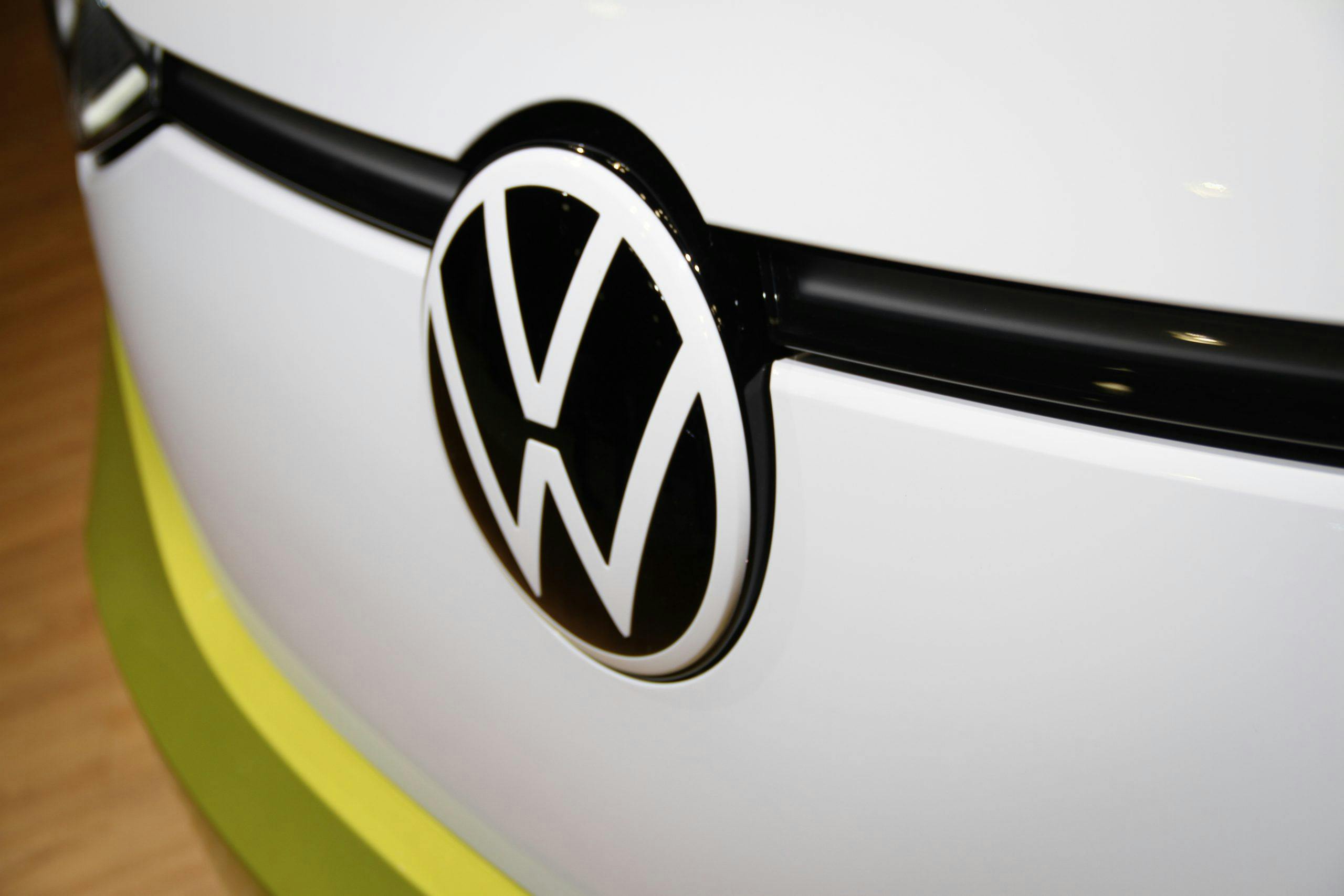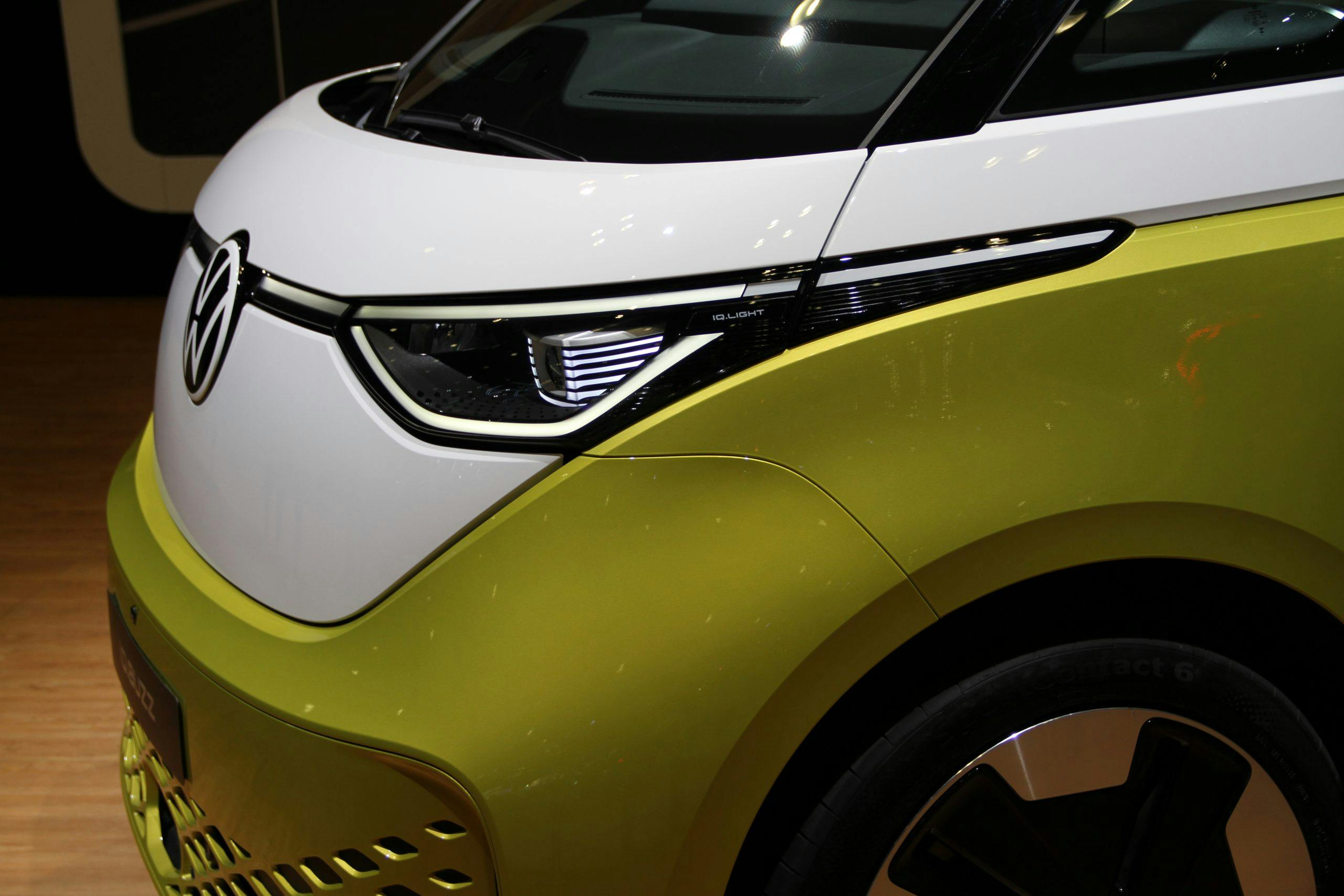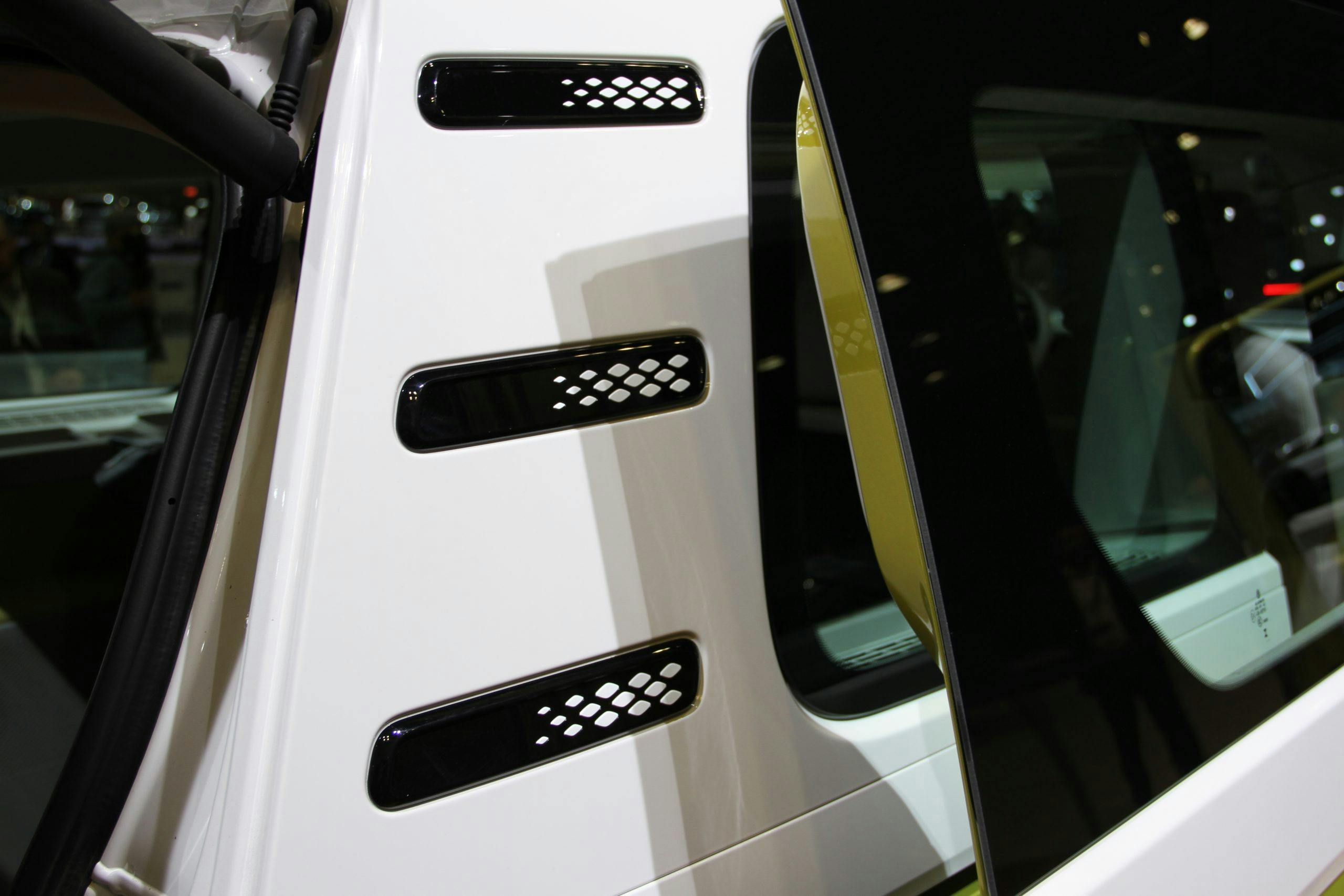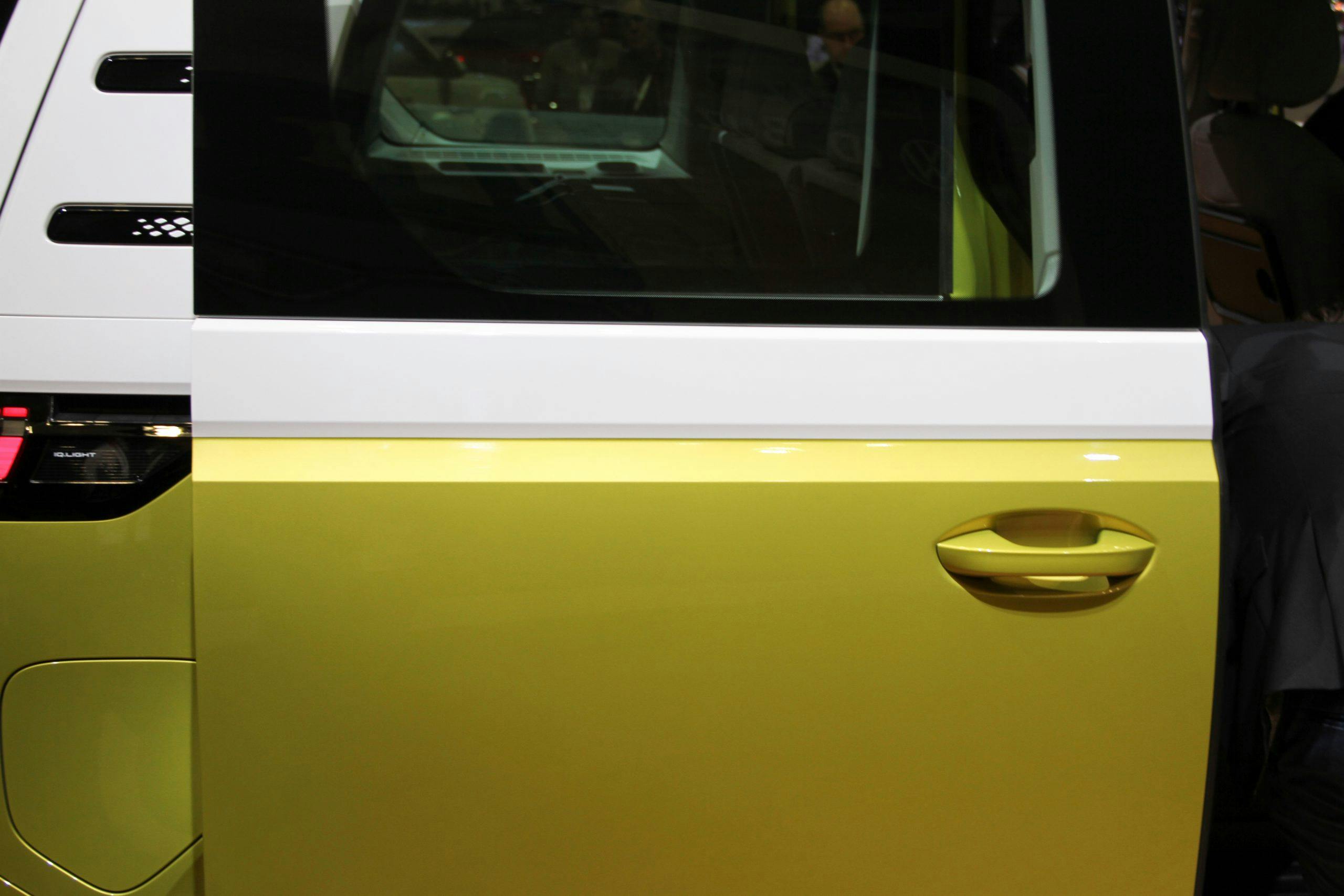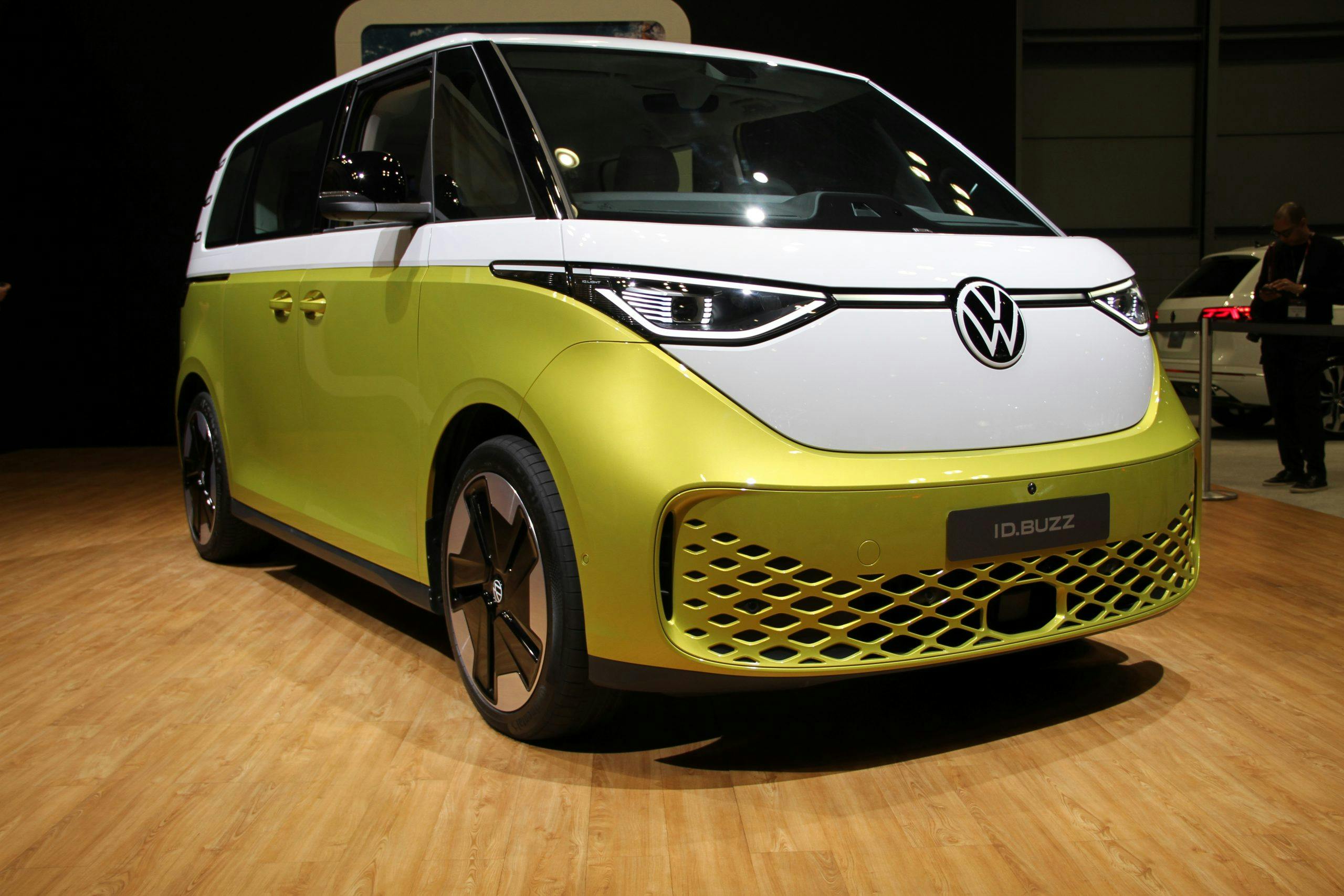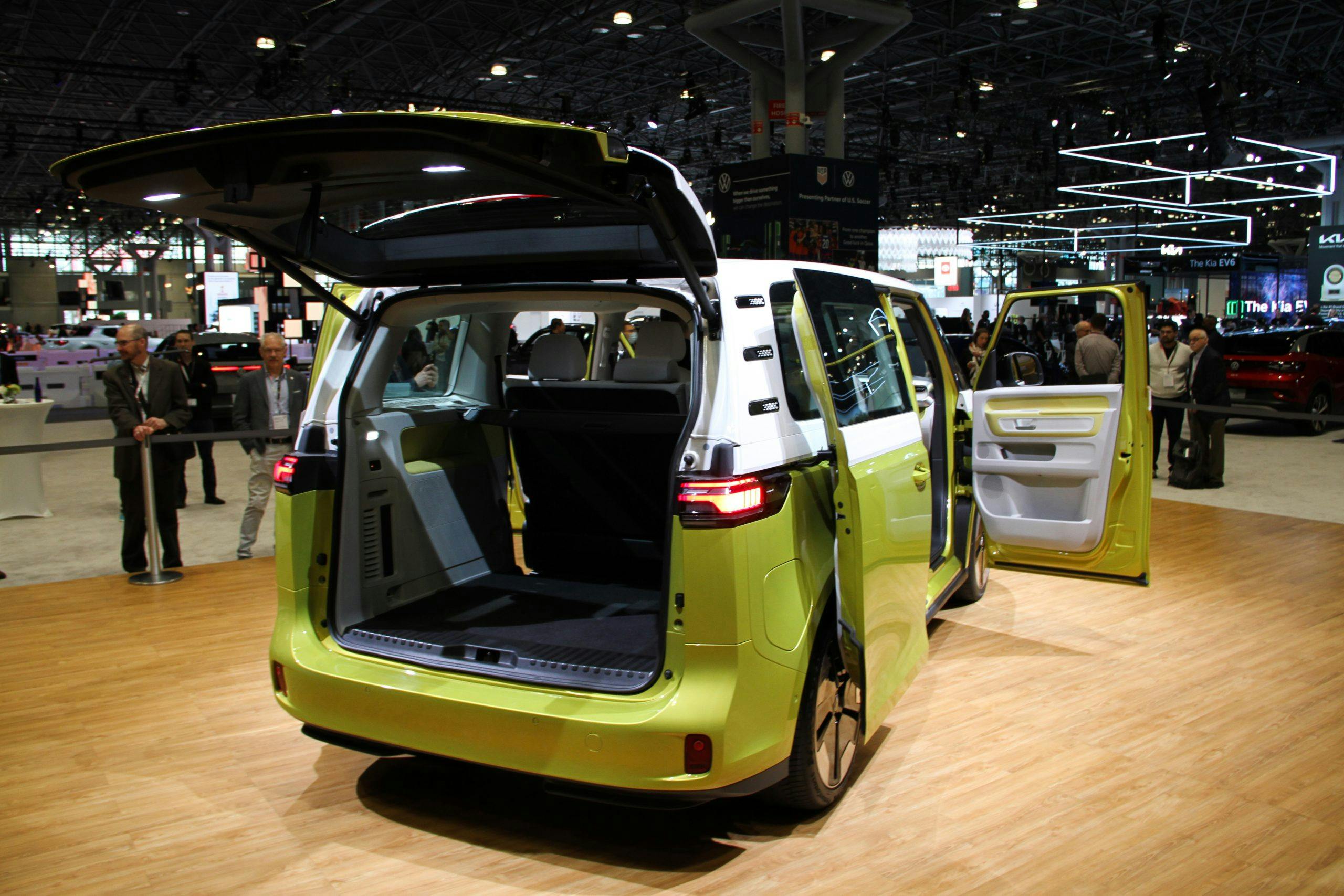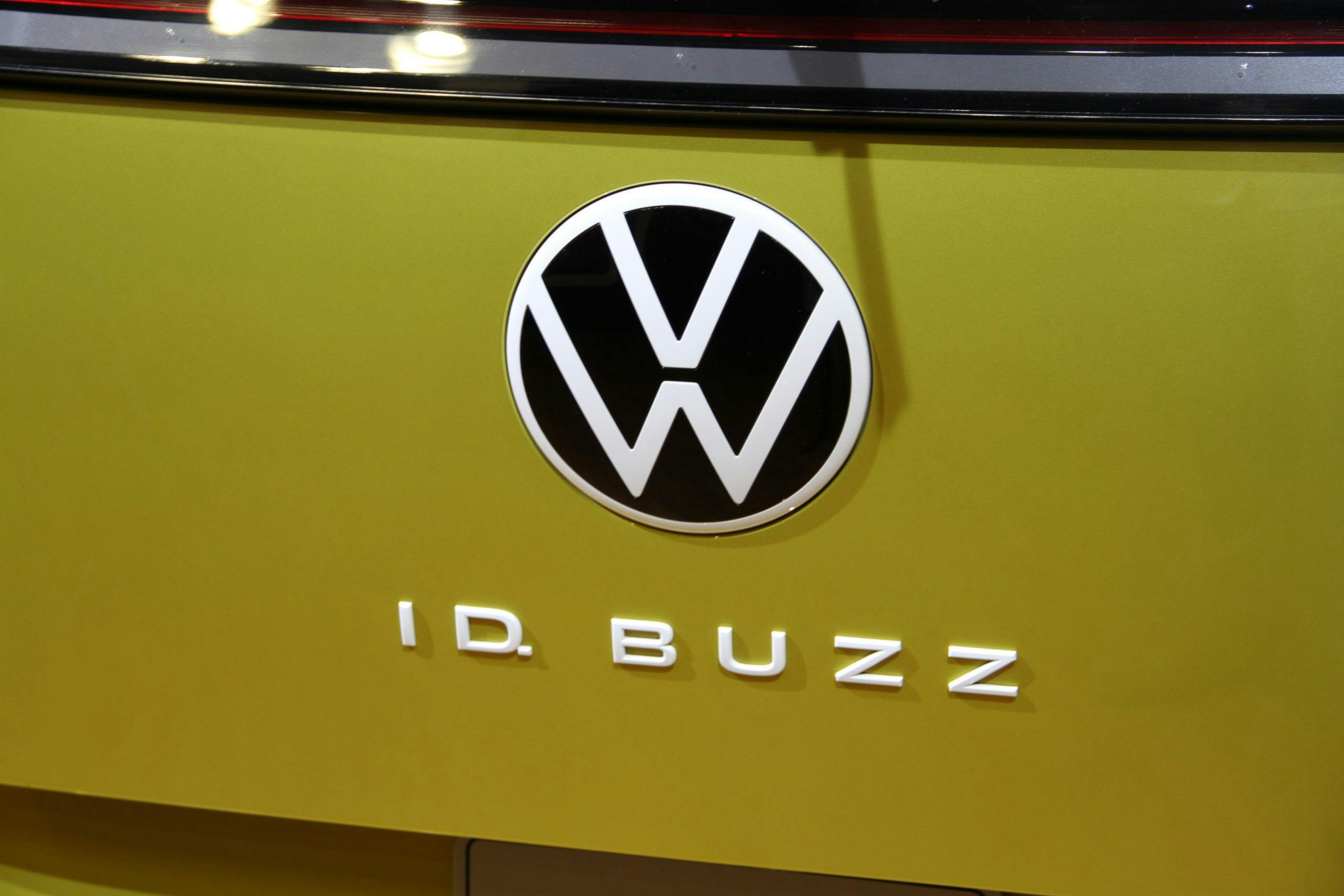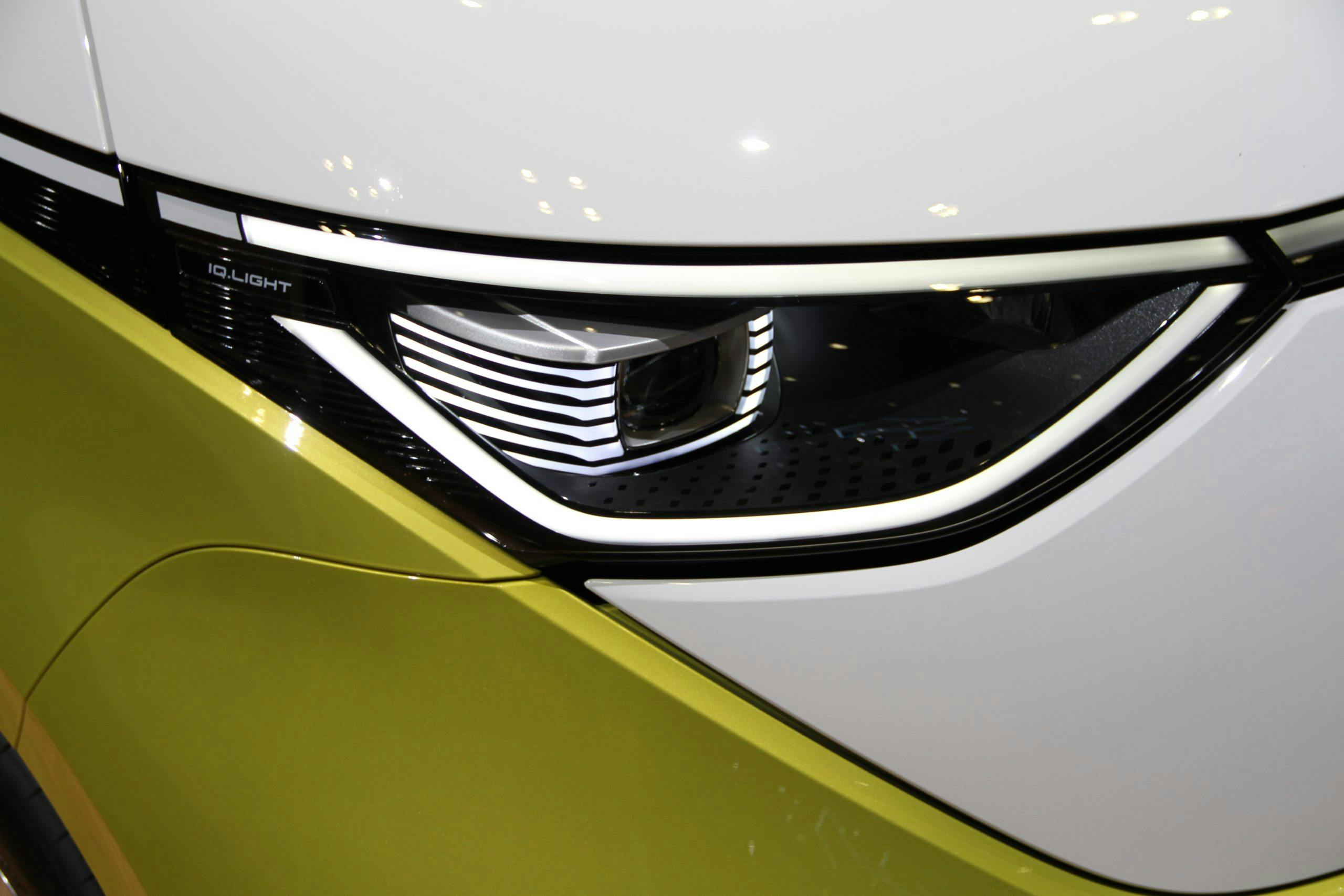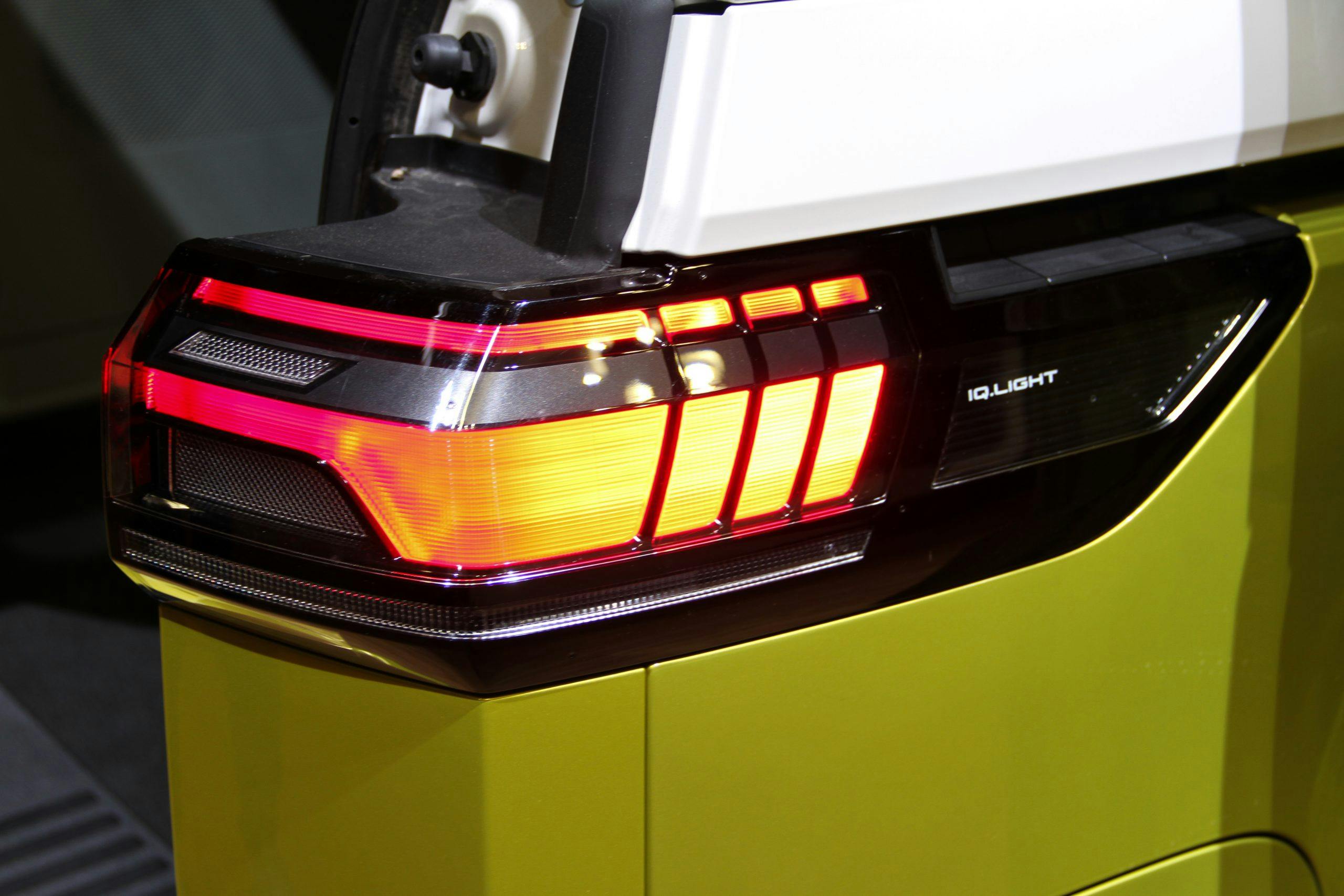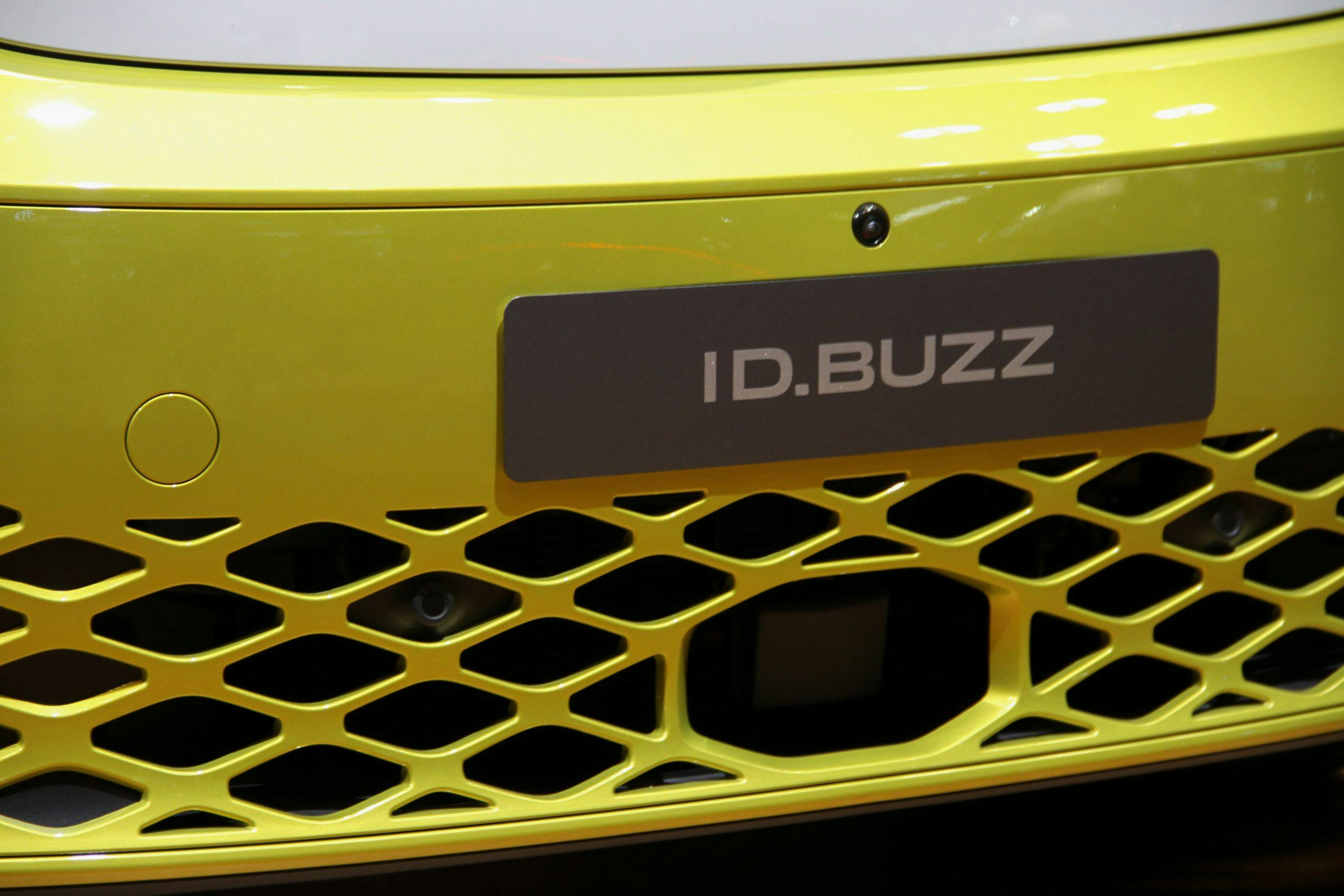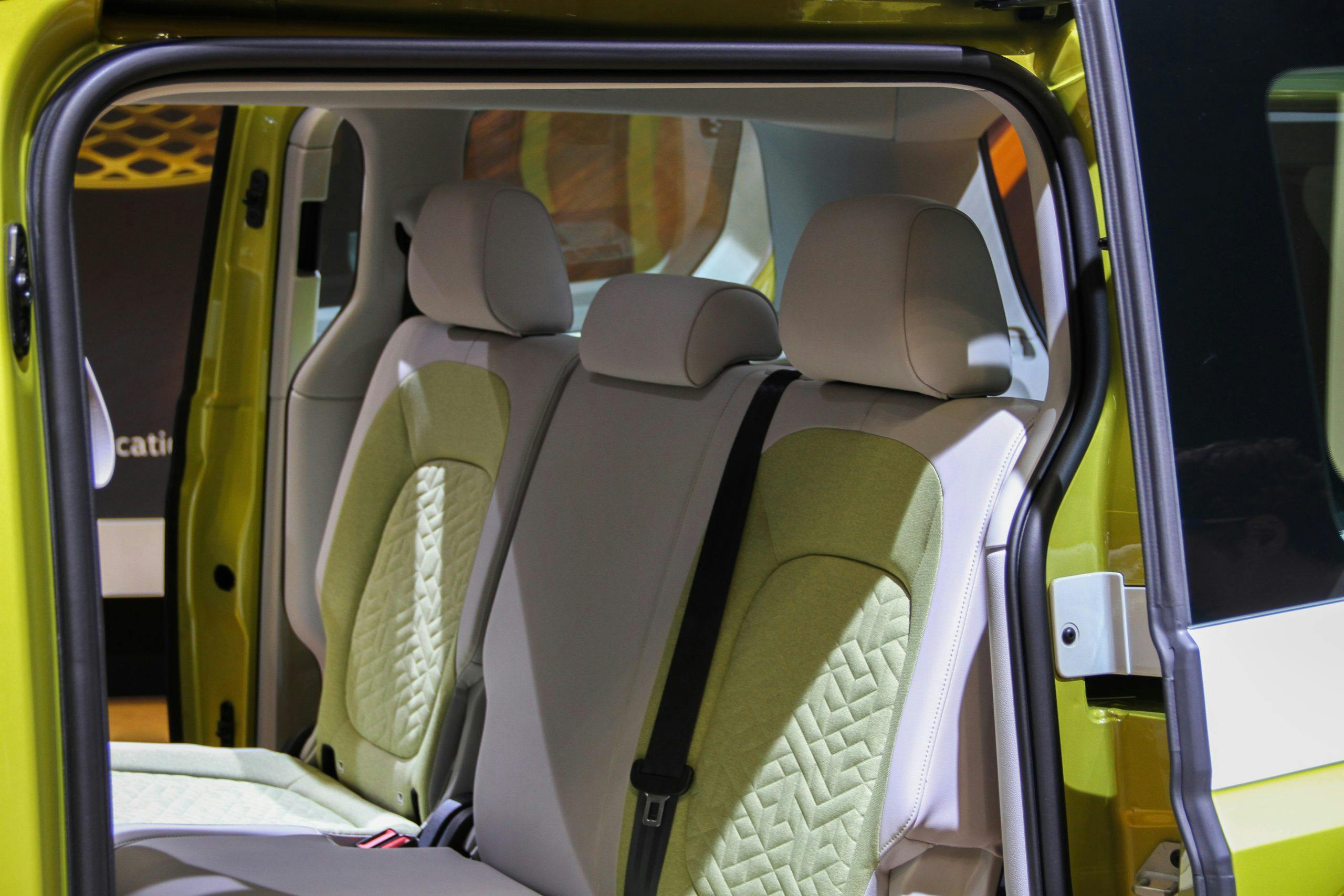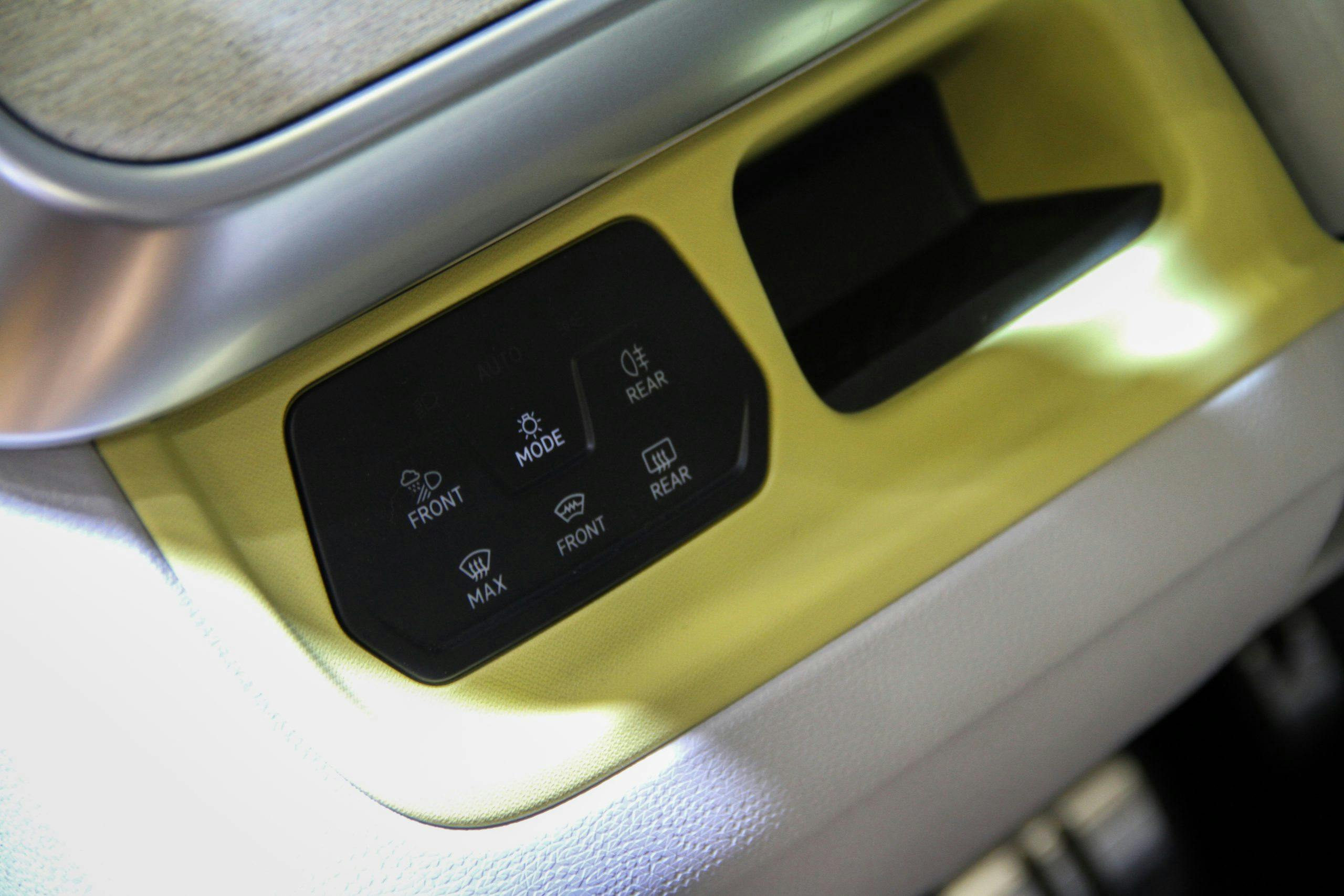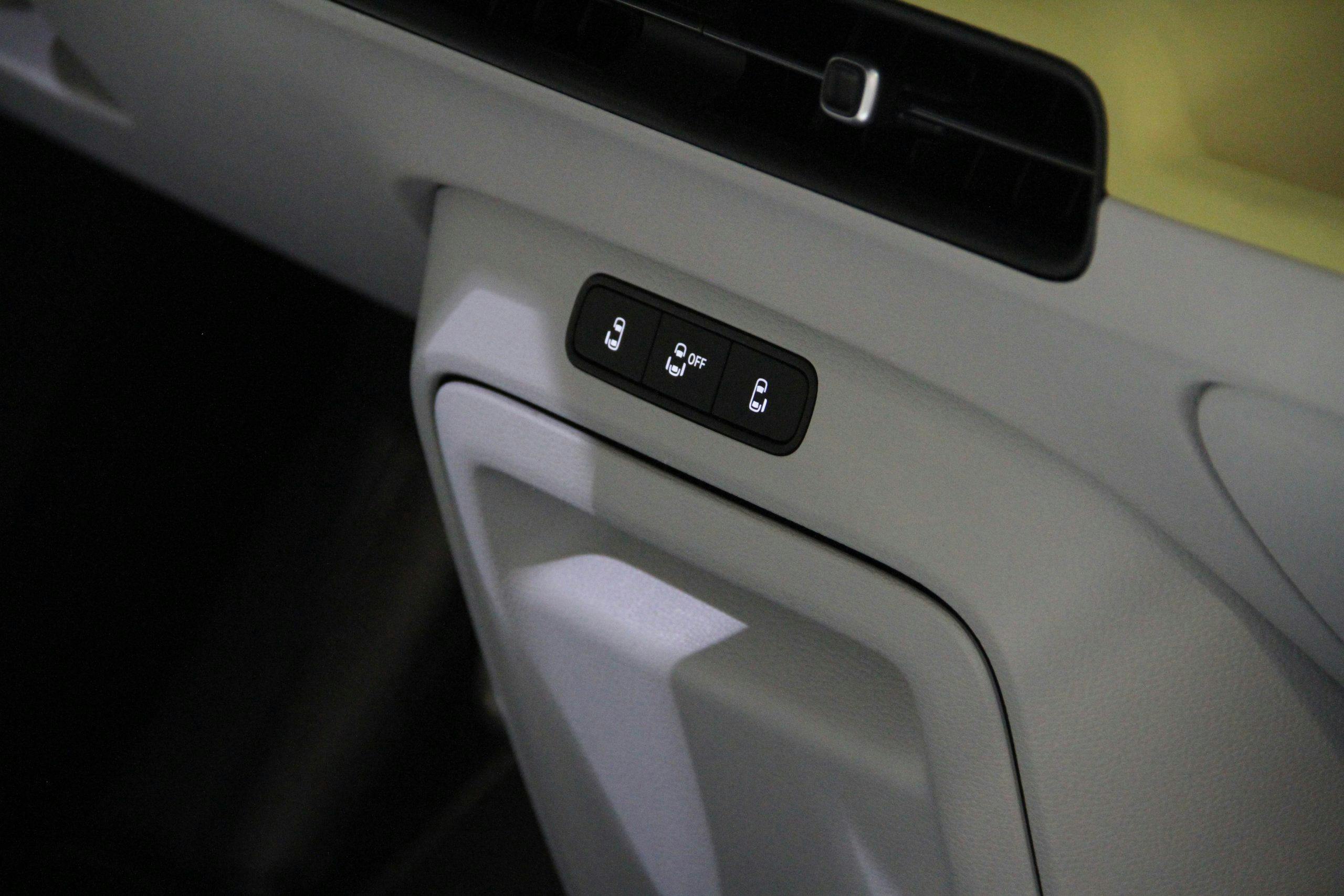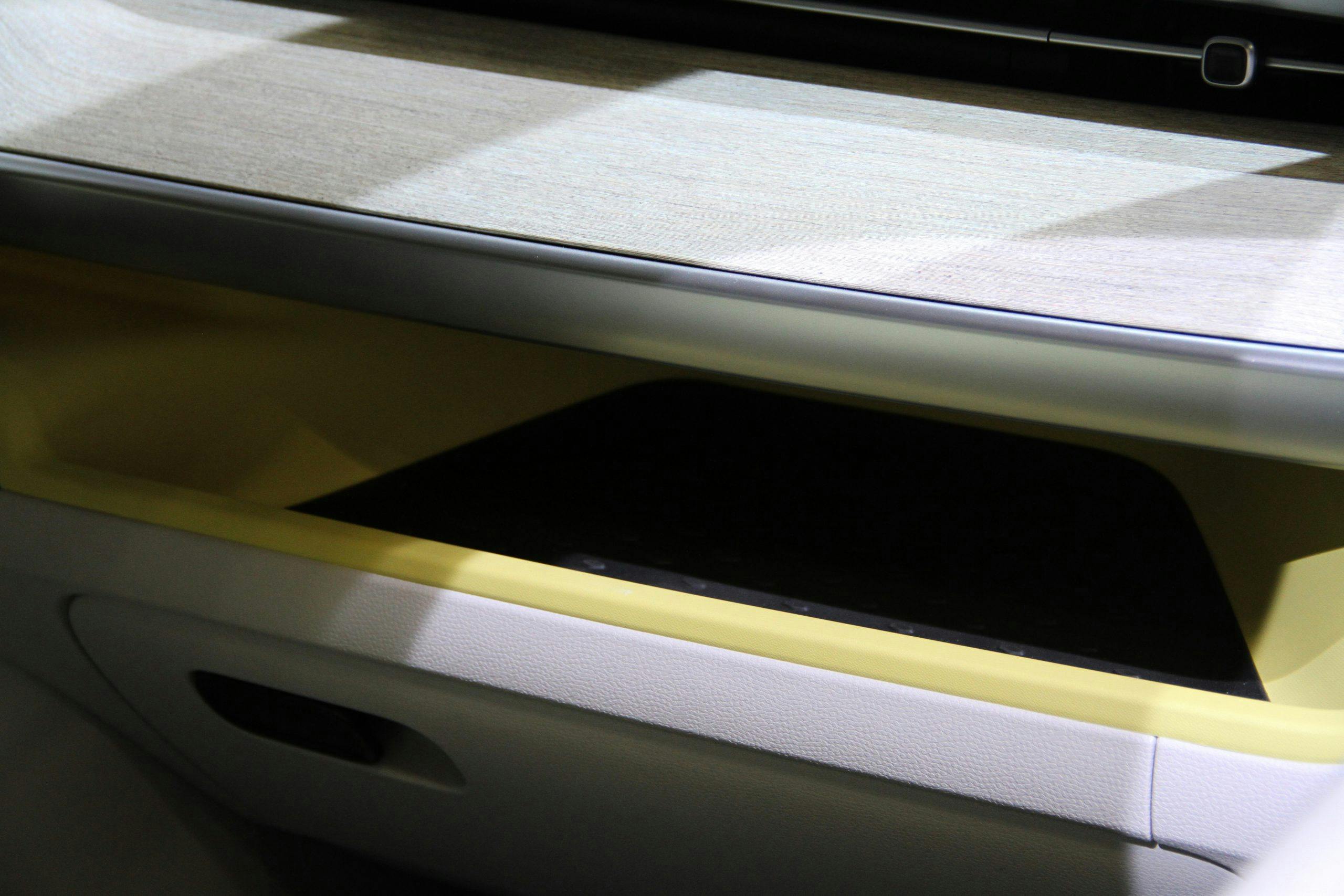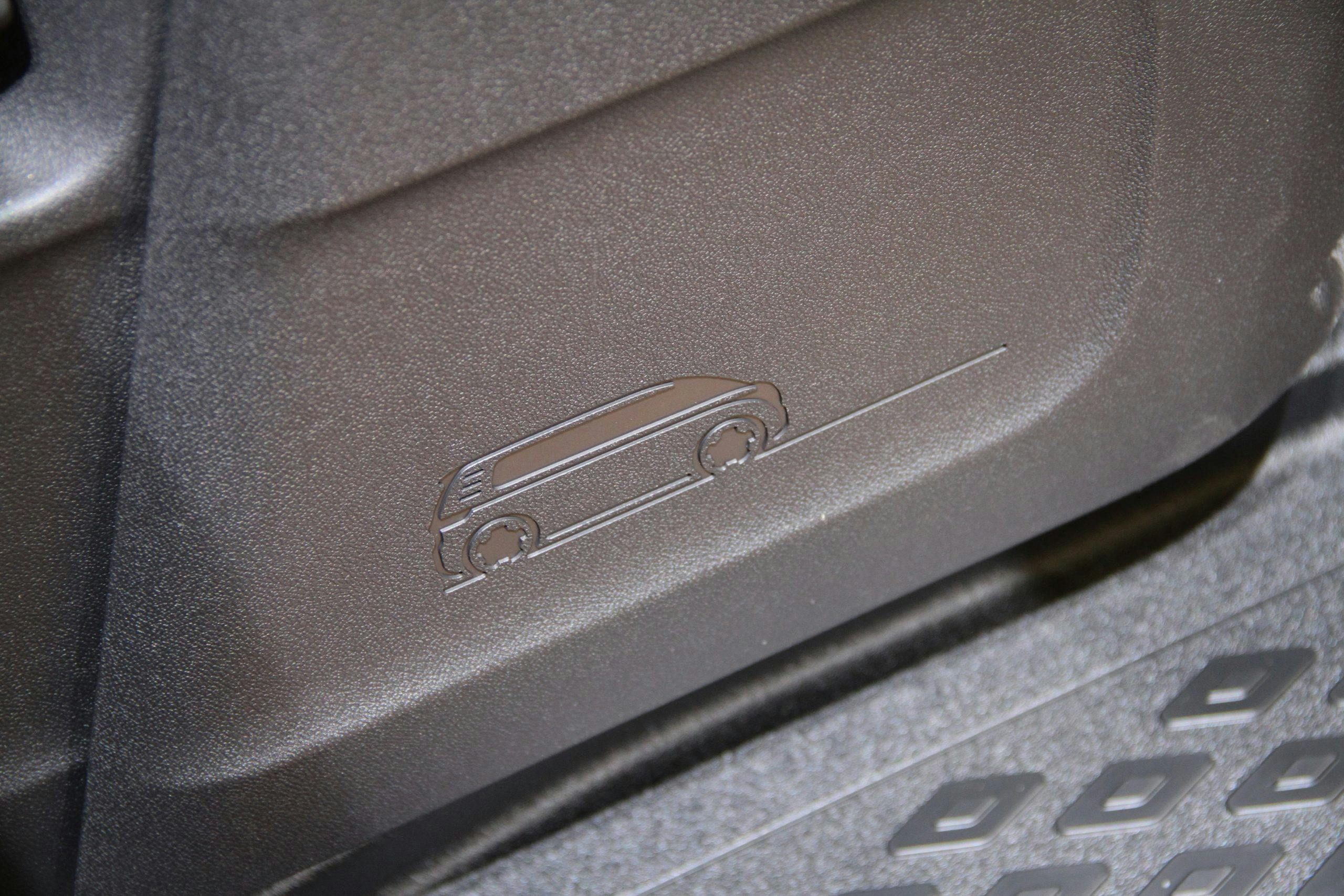Even on the auto-show floor, VW’s quirky ID. Buzz brings out your inner kid
It’s the Mystery Machine!” shouted Kelly Ripa and Ryan Seacrest when they saw Volkswagen’s new ID. Buzz. The affably cartoonish prototype, revealed last month, made the rounds in New York this week—first on Seacrest’s morning show, then at the 2022 New York Auto Show (NYAS).
It’s no mystery that VW’s more dignified lexicon would cast the ID. Buzz as a “people mover,” but any attempt to normalize such a lifeless title is confusing. This thing is too damn good at provoking smiles.
In 2024, the U.S. will be getting a long-wheelbase version with three rows of seats and sliding doors—good ol’ fashioned van traits that most Americans know and love. Nein! Halt! Call it Buzz, a Bus, people mover if you must, but the Buzz must stand entirely on its own, never to be compared with that joyless lot! It’s got flair and flavor for all! It knows no segment! The fear of such a beloved nameplate being pigeonholed as family transportation is real, but rather than run from dreaded minivan comparisons, team Buzz ought to embrace them: It’s as a van that the Buzz makes its strongest case.
Throughout the history of vanning, vandom, and its many vanbases, three predominant waves emerged. Let’s unofficially refer to them as the rad, the homely, and the hip.
The rad encompasses your muscled-up custom Dodges, Fords, Chevys/GMCs of the ’70s and early ’80s. Niche, edgy and underrated classics worthy of ink in their own right, but not entirely practical or efficient enough for a family. The homely is where the usual suspects reside: porky yet purposeful utilitarian models like the Odyssey, Sienna, and the erstwhile Sedona (replaced by the Carnival for 2022). All purpose, little pleasure, and virtually no personality. The hip was a rare breed because it unlocked a magical combination of both previous categories—the street appeal of the rad and the usability of the homely. And the only marque to have pulled off “hip” in van form was VW, with its iconic microbus, which dominated counterculture in multiple ways for decades.

“What makes a bus, a bus? [The original T1] was really successful because of the interior packaging, interior space, and being able to load all of your friends, family, and gear in there, and we’ve achieved that [with the ID. Buzz],” says Jeffrey Lear, VW America’s program manager for the MEB platform, the modular electric architecture that underpins the Buzz and its ID.4 stablemate.
“You want to be seen in this car, it’s a style icon, it’s a design piece as well … for anyone, and everyone,” he continues. “You don’t have to have a family to drive this thing.”
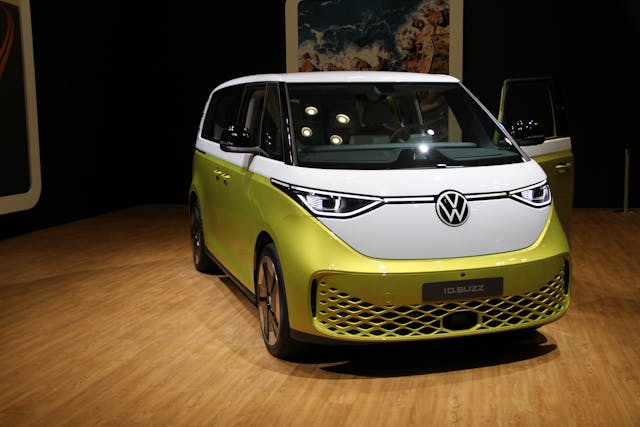
Amid an ever-rising tide of toaster-like electric crossovers, the Buzz’s arrival is timely. When it does finally go on sale here in America in 2024, the Buzz won’t look like anything else on the road. Its unusual silhouette brings a powerful advantage that few vans have leveraged since the original T1 stormed the market. Two-tone paint schemes, flat “slab-design” body panels, flush wheels, and large circular logos all hearken back to the original, some of which are made only possible under today’s engineering standards. No simple task for VW’s team.
“It has to blend in with the ID. family, and say ‘I’m a modern Volkswagen, I’m electric,’” says Lear. “But of course, it also has to look like a Bus. And I think we really achieved that.”
Though the U.S. will only get the long-wheelbase version, front and rear overhangs will remain unaffected, as will the powertrain, centered on a rear-mounted, 201-hp electric motor. The stretch will occur between the front and rear wheels to preserve proportions while generating the additional leg and cargo room that Americans (and their kids and dogs) expect.
“Bigger generally works … [the Euro-spec version] is the length of the Tiguan, which is super manageable in the city … the long version, it’s not like it’s going to be the [Jeep] Grand Cherokee L,” Lear jokes.

The interior is open, airy, and upright. It’s fully outfitted with VW’s latest tech and even features fold-down tray tables in the seat backs. The juxtaposition of screen and plastic work-surface is comical but practical when you consider that tech-obsessed younglings expect their devices to be in easy reach at all times. As a pre-series prototype, the inside options shown thus far are all, of course, open to alteration, but there won’t be any shortage of electrically enhanced features and technologies in the modern-day Buzz.
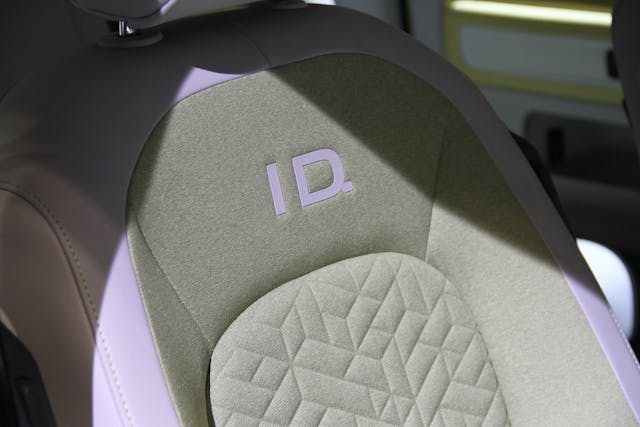
Fans of the classic Microbus may balk at this electric resurrection, not to mention VW’s attempts to leverage its retro aesthetic to an audience that wasn’t even alive for Woodstock. But it truly feels as though VW’s designers made an honest, respectful effort to capture the allure of the original Bus and infuse it into the EV successor. If first in-person impressions are anything to go by, they’ve proven successful: The ID. Buzz brings as much unapologetic quirk to 2022 as what the original did over seventy years ago (sans the socio-economic subtext, of course).
European preorders begin in May of this year, and deliveries will commence this fall. The North American market won’t see its long-wheelbase debut until early 2023, with sales slated for 2024. For now, we’ll have to wait while the Americanized Buzz continues to take shape.
Never underestimate the power of a vehicle that can conjure up the kid in you at first glance. If the price is palatable, the allure of owning a hip, two-toned Mystery Machine may prove too hard to ignore.

